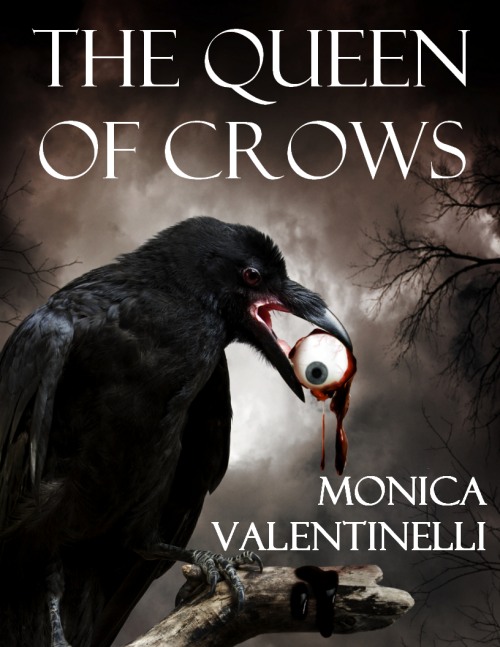 I’ve had a lot of positive feedback from my previous post entitled Weighing in on E-Books, so I wanted to talk about ways to calculate the cost of an e-book.
I’ve had a lot of positive feedback from my previous post entitled Weighing in on E-Books, so I wanted to talk about ways to calculate the cost of an e-book.
First, let’s pull some arbitrary numbers. (And by arbitrary, I mean that these are not precise figures.) Let’s say that we paid our author $3,000 for their novel that was 100,000 words in length, which is the equivalent of about 3 cents per word. Then, let’s say we paid an editor a flat rate of $1,250 to edit the novel and an artist $500 for cover art. Add in production costs of $250 to create an e-book, and that gives us a grand total of $5,000 as the sum of the costs for our imaginary publisher.
In order to make up the costs of producing the e-book, we would need to sell a certain amount of copies at a specific price. Say that we priced the e-book at $10.00. If we kept one hundred percent of the revenue, we would need to sell 500 copies of that e-book to make up our costs before we made any money off of the book.
We decided that a retailer, like Amazon, is the best way to offer our e-book for sale. Currently, Amazon takes 65 percent of the cost of the book for all Kindle editions. Recently, they announced that they will lower that rate to thirty percent, but the new rate won’t kick in until June 30, 2010. (Read Amazon ups author royalty for Kindle, matching Apple per CNet.)
Let’s calculate our cost based on the 65% rate, because I think it’s important for you to see how that affects a publisher’s bottom line.
Now, we’d only make $3.50 for every book sold at a price of $10.00. At that rate, we need to sell approximately 1,429 or almost three times the amount of e-books if we took 100% of the revenue to make up our costs. Some retailers take less than 65 percent, but they still take a percentage to offer the book through their store. If you sign up with a One BookShelf site like DriveThruHorror e-books for example, they’ll only take 30 percent. Our profit would now be $7.00 for every e-book sold. So, we need to sell approximately 715 e-books to make up our costs at the $10.00 price rather than 1,429.
Even though we’ve estimated a price based on our costs, we need to think about something else — demand. Is this title only available as an electronic book? Or do we have a hardcover or paperback edition? Will pricing the e-book on sale at $5.99 sell enough copies to warrant the discounted price? How popular is this particular author? The volume of e-books that we need to sell might be different, depending upon any number of additional factors. One issue might come down to the original agreement that a publisher has signed with the author. Unfortunately, there are contracts that pre-date the release of electronic formats so it’s not uncommon to see authors providing a publisher with print rights but not digital or audio rights.
For me, I’m factoring in demand based on the reader’s awareness of my work as an author. Chances are, my soon-to-be-released small press product is not going to sell 1,000 copies at a price of $9.99 within a reasonable amount of time. Because I’m projecting lower sales, I’m lowering the costs of developing my digital product. Instead of paying an editor a thousand dollars, the publisher is offering a direct royalty payment that pays per product sold. We also are reviewing ways to make the product more valuable and attractive to readers by researching different types of graphics and layouts. Still, I needed to come up with two pricing structures; a retail price and a sale price. For me, my e-book price is lower than $9.99 because my costs and the demand for my work are both lower than a mainstream author. Those two things combined also mean that it may take me longer to recoup my costs.
Personally, I have a lot of trouble with people offering e-books at heavily discounted prices or for free, because this devalues the books considerably. What would you think of a print book that’s “on sale” for only ninety-nine cents? It’s original price is only $1.99? To me, this pricing structure seems pretty arbitrary. If your costs were $1,000 and you offered the book through OneBookShelf, you’d still need to sell approximately 720 books to make up that cost. (If your costs were $5,000, you’d need to sell 3,598 copies!!!)
Regardless of whether you self-publish or not, I feel that it’s a smart idea to calculate price based on your costs and your projected sales. By doing that, it can help you set reasonable expectations for your e-book pricing structure and prevent you from losing money over the long haul. Keep in mind, that the biggest mistake I see publishers making, is offering their e-book through a digital retailer like Amazon.com or OneBookShelf, and then “forgetting” about that book. If you want to make up your costs, be sure to include marketing your books — wherever they are being sold — into your plan. Sometimes, you need to make readers aware that you now offer your books in a different format, in order for them to buy those products.
If you’re curious about Amazon’s rates, be sure to visit Amazon.com’s Terms and Conditions or the Terms and Conditions for DriveThruRPG through OneBookShelf. (The Terms and Conditions for the DriveThruRPG site are very similar to the fiction and the comic book sites.)



 I’ve had a lot of positive feedback from my previous post entitled
I’ve had a lot of positive feedback from my previous post entitled